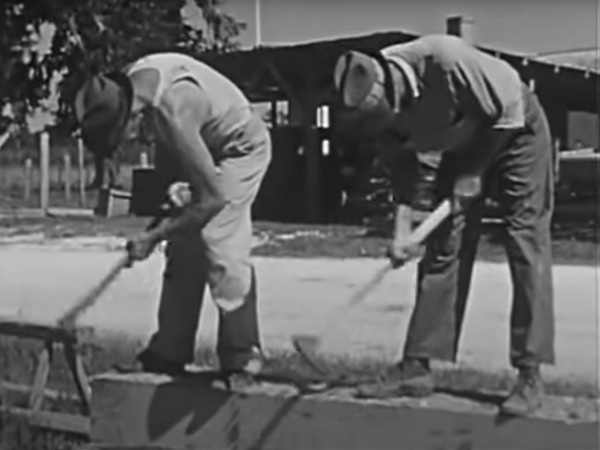Rick Pratt, a friend of Small Boats Monthly, sent us this tip:
“This short 14-minute film made in the swamp country of South Louisiana in 1949 was funded by Standard Oil. It shows Cajun craftsman making a pirogue the ‘old way.’ Hewn of a cyprus log by hand; probably the last pirogue made this way.
Note the serving of Cajun coffee in demitasse cups with tiny spoons. It’s a tradition down here that still endures. If you haven’t ever had it, look out. Made in ole time ‘drip pots,’ it is sweetened in the pot. It’s thick as motor oil and super sweet. The areas along the bayou and the people looked much the same when I started working the oil patch.
A lot of the time, oilfield people (known as ‘Texakins’ by the Cajuns no matter where they were from) had to have an interpreter so they could communicate with the guys I worked with in the oil field. Just about everybody was Cajun French. A lot of the older guys couldn’t (or wouldn’t) speak English. Step back in time and check out the full-length video.”
Here’s the minute-long trailer:

Does anyone know why a hole was drilled and then plugged with dowel at about minute 10 of this film? I did not see a knot or other imperfection that might normally be addressed in this manner.
At 10:45 the builder pokes a stick into the hole. The stick has a long notch in it and is apparently a gauge for checking the hull thickness. Dugouts are usually shaped on the outside first and then the interior is hollowed out, and to achieve the desired thickness of the hull there has to be some way to measure it. I haven’t seen this particular method before; a more common procedure is to drill multiple small holes from the outside and tap measured pegs into the holes as indicators of the thickness at that point. When the hollowing of the interior exposes the end of one of the pegs, the hollowing is finished at that point. Canoe builders of the Pacific Northwest used red cedar logs for the hulls and yellow cedar pegs for the thickness gauges. The contrast in color made the pegs easier to see.
Christopher Cunningham
Editor
Thanks, Chris. Great explanation of the technique.
Great video. I especially enjoyed the interplay between the builder and the kids. A simpler (and better?) time. The building techniques were also interesting. Not once was anyone shown trying to bull the log into shape. Just razor-sharp tools and slow, steady teamwork. Fantastic.
When I lived in New Orleans there was a guy in Mandeville, Louisiana, on the North shore of Lake Pontchartrain, who carved Pirogues. This was about 30 years ago in the late ’80s early ’90s. They were beautiful.